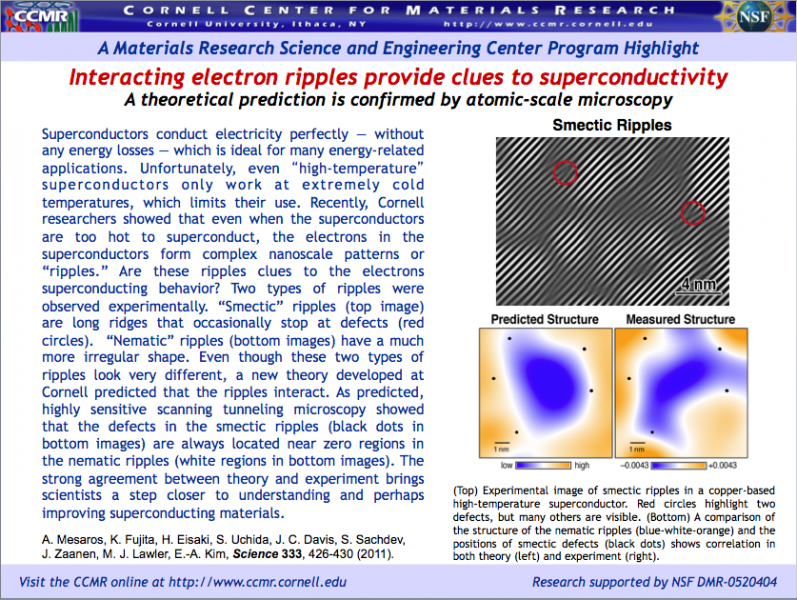
Superconductors
conduct electricity perfectly — without any energy losses — which is ideal for
many energy-related applications. Unfortunately, even “high-temperature”
superconductors only work at extremely cold temperatures, which limits their
use. Recently, Cornell researchers showed that even when the superconductors
are too hot to superconduct, the electrons in the superconductors form complex
nanoscale patterns or “ripples.”
Are these ripples clues to the electrons superconducting behavior? Two types of
ripples were observed experimentally. “Smectic”
ripples (top image) are long ridges that occasionally stop at defects (red
circles). “Nematic”
ripples (bottom images) have a much more irregular shape. Even though these two
types of ripples look very different, a new theory developed at Cornell
predicted that the ripples interact. As predicted, highly sensitive scanning
tunneling microscopy showed that the defects in the smectic ripples (black dots
in bottom images) are always located near zero regions in the nematic ripples
(white regions in bottom images). The strong agreement between theory and
experiment brings scientists a step closer to understanding and perhaps
improving superconducting materials.